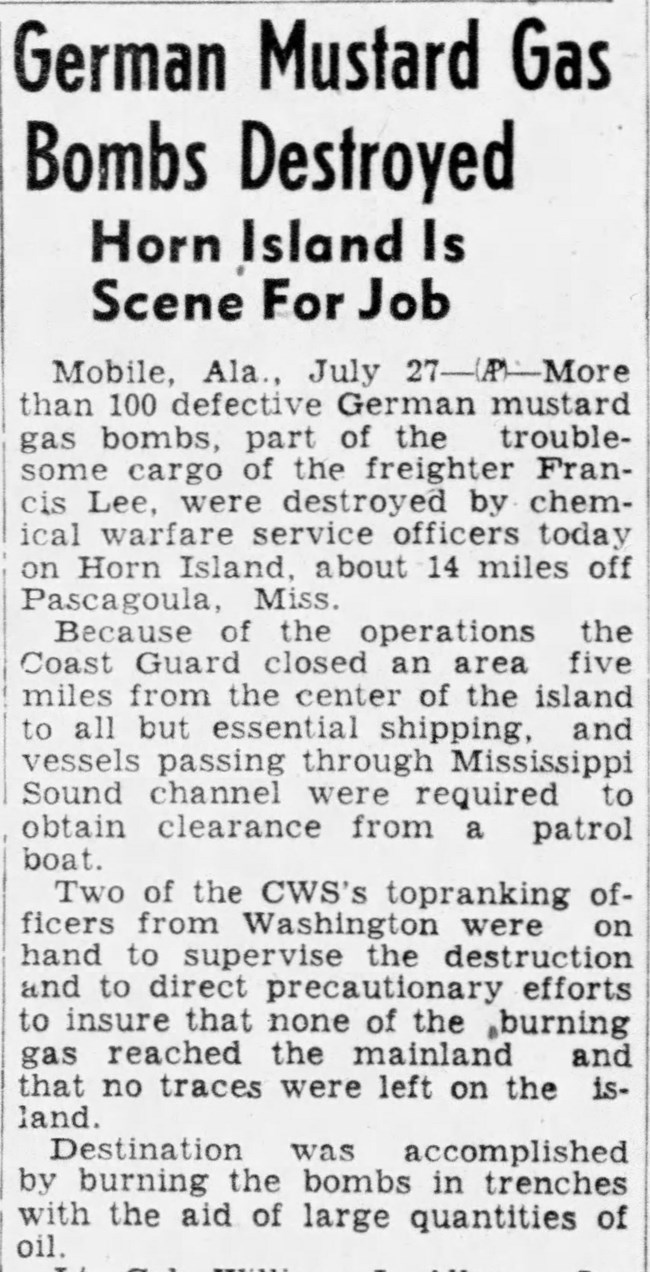Last updated: January 14, 2020
Article
Chemical Warfare Station on Horn Island

The Chemical Warfare Service Quarantine Station on Horn Island was a project by the US Army to test toxic weapons during WWII. Poisonous warfare has a long history, dating back to at least 600 BCE. In its modern use, weapons using deadly chemicals have destroyed thousands of lives.
Gas masks became a standard part of military uniforms during WWI, as the use of chemical weapons grew. The gas masks helped keep people, and animals like horses, from inhaling toxic fumes. Chemical warfare development occurred during the war and in the immediate aftermath. With the outbreak of WWII, poison weapons again became a scary reality. The US Army created a center to test chemical-based weapons on Horn Island.
Horn Island housed the Chemical Warfare Service Quarantine Station from October 1943 to July 1944. The area was a testing range, where the Army hoped to check the effectiveness of their weapons before using them in combat. Horn Island could only sustain small-scale tests “because the island was only ten miles away from the mainland and because it was belatedly discovered that for two-thirds of the year the prevailing winds blew toward the mainland.” Winds could transport the harmful toxins into populated areas along the Gulf Coast.
The center only conducted 23 tests. Bombs containing a botulinum toxin exploded over a grid housing caged guinea pigs. Ingesting the toxin caused the lungs to stop working, resulting in death. The bombs failed to disperse the toxin and all the guinea pigs survived, leading to the station’s closure. The equipment and supplies went to the new testing center at Camp Detrick in Maryland. This was not the end of the toxic chemicals on the island, however.
In 1946, the US Army conducted “Operation Hornblow” to remove 133 leaking mustard bombs from service. The bombs were part of a shipment of captured German explosives. The mustard compound released in gas form when exposed to heat from the exploding bomb. When inhaled, it caused suffocation. The Army destroyed the bombs on the island by burning them, using the heat from the fire to incinerate the mustard compound inside. Soil tests from 1947 indicated there were no traces of toxic chemicals on the island.
More recent testing in 2013 also found no traces of the toxic chemicals. Despite its past, Horn Island is now one of the most protected and preserved public lands within the United States. It is a thriving barrier island, home to a variety of wildlife, and serves as a reminder of the healing power of nature.
